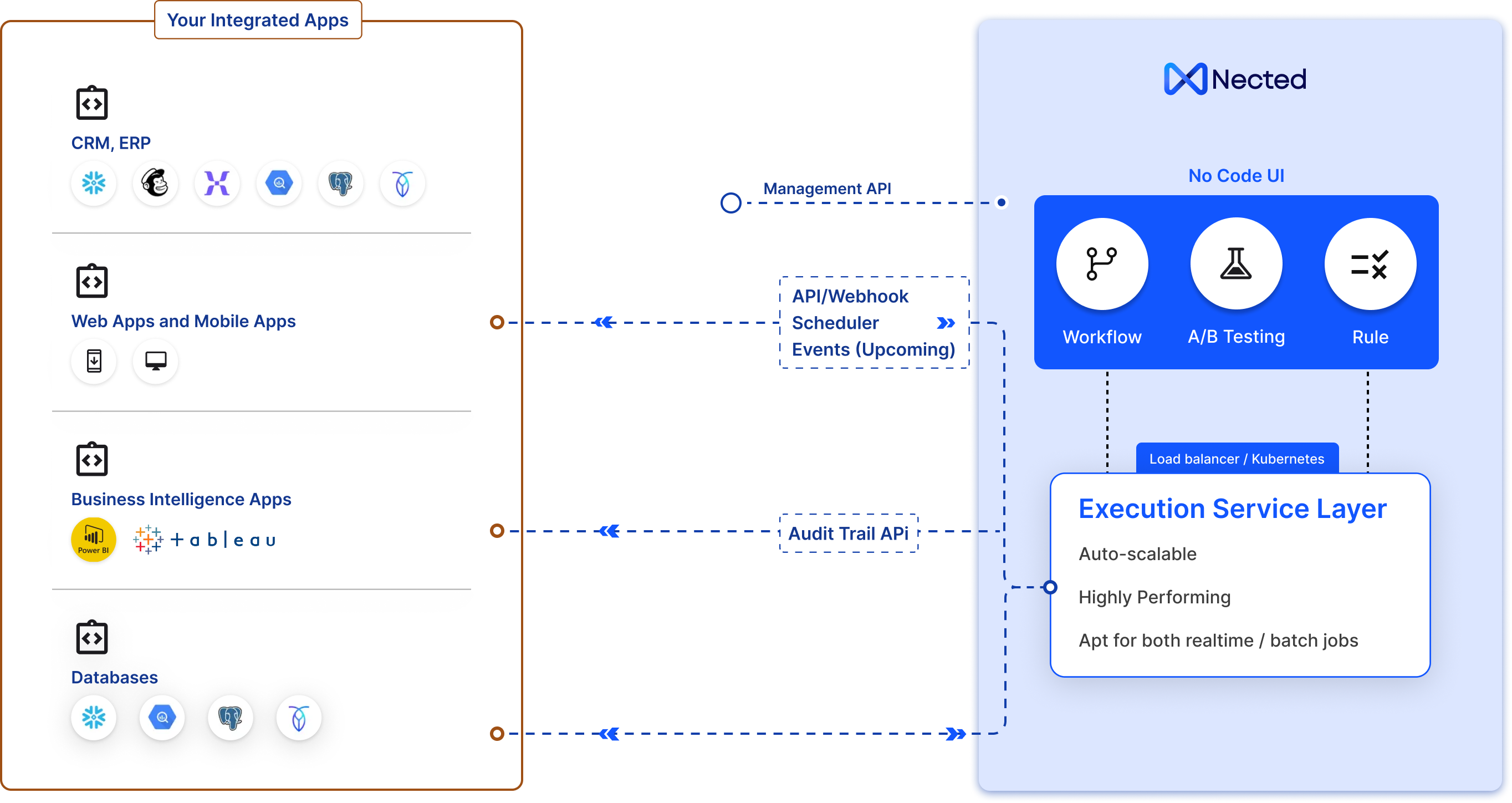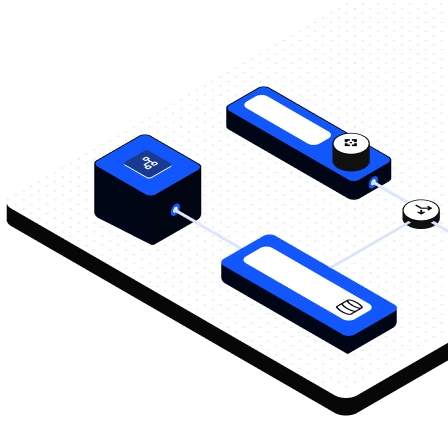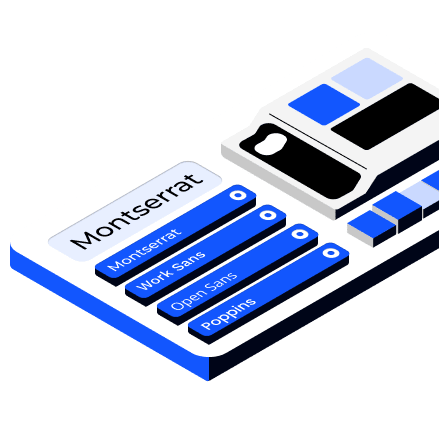
Manual reviews and rigid rule change processes create compliance bottlenecks and inflate operational costs—teams spend most time tuning rules, not stopping fraud.

Updating rules and watchlists to meet new regulations takes weeks, exposing the business to fines and remediation costs.
.webp)
Static thresholds and fragmented data sources create excessive false positives, draining analyst capacity and delaying genuine investigations.
.webp)
Teams lack sandboxed backtesting to validate rules against historical data, increasing the chance of false negatives or costly false positives.

Legacy engines and siloed pipelines fail under peak transaction loads, causing delays and missed detections.

Poor version control and incomplete trails make investigations slow and increase regulatory risk.

Business and compliance teams author complex rule chains with visual logic, branching, and modular decision blocks—no engineering handoffs required.

Connect to sanction lists, KYC vendors, payment gateways, core banking, and data lakes with pre-built connectors and REST APIs; orchestrate enrichment and case workflows end-to-end.

Automatically enrich alerts with KYC profiles, transaction history, counterpart risk scores, and external sanctions data so analysts act on prioritized, high-fidelity cases.

Validate rule changes against historical and live traffic, then run thousands of decisions per second with no downtime—ensuring fast, safe rollouts and measurable impact.
.webp)

Seamlessly integrate with any system using simple API-based connectors. No need for complex configurations—connect databases, third-party services, and internal tools with just a few clicks.
.webp)
Leverage a powerful rule engine with multiple rule types, including Simple Rules, Decision Tables, Decision Trees, Rule Sets, and Rule Chains to handle complex logic effortlessly.
.webp)
Automate workflows with Action, Rule, Workflow, Code, Database, and REST API Nodes, while Loop, Delay, and Switch Block manage execution.

Efficiently oversee the entire rule and workflow lifecycle with built-in versioning, rollback capabilities, and staging environments, ensuring seamless transitions from testing to production without disruptions.
.webp)
Deploy Nected anywhere—choose multi-region cloud hosting for high availability or self-host on your infrastructure for complete control and compliance.

Gain full visibility into your decision rules and workflows with audit trails features, and real-time dashboards. Stay compliant and track every change with ease.

Deliver a fully white-labeled experience with embedded user functionality. Use Nected as your own branded decision engine.

Operate with confidence using enterprise-level security, role-based access control, and scalable infrastructure that ensures data integrity and performance even at scale.

Deploy intelligent AI Agents to automate document extraction, text classification, data enrichment, or any other domain-specific task. Build your own agents or plug in pre-trained ones directly into your workflows.

Integrate APIs, databases, and AI models like OpenAI or Vertex in minutes—no coding, just simple drag-and-drop setup.

Nected matches enterprise-grade rule types found in Pega and DecisionRules—visual rule authoring, versioning, and workflow orchestration—but outperforms in speed of deployment and business autonomy. Unlike heavy-code platforms, Nected delivers: no-code rule creation for compliance teams, plug-and-play connectors to KYC/PEP/sanction feeds, real-time decisioning at 100k+ checks/min, and integrated case management with audit trails and rollback. This reduces dependence on engineering while preserving enterprise security, traceability, and deployment flexibility (cloud, private cloud, or on-prem).
Business teams can author, test, and deploy AML rules in hours. Typical onboarding timeline: sandbox with historical data in 48–72 hours, first rule live in under a week, full production rollout in 2–4 weeks depending on integrations. No-code rule templates and pre-built connectors dramatically shorten time-to-compliance versus traditional rule engine implementations.
Yes. Nected’s architecture supports high-concurrency decisioning—hundreds of thousands of checks per minute—while providing predictable latency. Horizontal scaling, bulk-batching, and asynchronous orchestration ensure screening and workflow processing remain performant during peak volumes.
Nected provides full audit trails, immutable versioning of rules, role-based access control, encryption at-rest and in-transit, and extensive logging for regulatory review. Integration with SIEM, DLP, and identity providers is standard. Customers retain options for hosted, private cloud, or on-prem deployments to meet jurisdictional compliance.
Nected includes sandboxed backtesting and replay capabilities—run new or updated rules against historical transaction sets to measure hit rates, false positives, and operational impact. Built-in simulation reports and threshold tuning help compliance teams iterate safely before production deployment.
Nected supports REST, SOAP, SFTP, MQ, JDBC, and pre-built connectors for sanction lists, PEP databases, KYC providers, payment gateways, core banking systems, AML screening vendors, and enterprise data warehouses—enabling comprehensive enrichment and contextual decisioning in real time.
Invocations refer to the number of times your workflows/rule is triggered via API, cron or other trigger. It will count the parent rule/workflow and can have as many rules, nodes within it. This metric is often used for billing purposes. Compared to other products, invocations as a billing metric can be more cost-effective and transparent, aligning closely with your actual usage and needs. It ensures you pay for the value you receive, rather than flat rates or less relevant metrics.
If you exceed, you'll be charged based on additional usage and will be added in your monthly charge. In case of payment failure after grace period, your plan will be reverted to free trial limiting your monthly execution and # of rules/flows as per free plan, however all your existing rules/workflow data would be kept intact.
Firstly, we do not have a vendor lock-in, so you can cancel anytime you want. However, if you decide to cancel once your subscription for a given period has started then you would be able to cancel at the time of the next billing cycle only.
Yes, you can typically upgrade your Nected plan at any point during your billing cycle. The upgrade process is usually straightforward, often involving just a few clicks in your account settings. Upgrading mid-cycle may involve prorated charges for the higher-tier service.
The best plan depends on your specific needs, such as the expected number of invocations, the complexity of your workflows, and the level of support you require. It’s a good idea to start with a basic plan and upgrade as your needs evolve, especially if you're new to Nected. Moreover, you can also write to us at assist@nected.ai and we will help you figure out the best plan for your brand.
Yes, Nected usually offers assistance in setting up and creating a Proof of Concept (POC), especially under certain plans. This assistance can include access to customer support, documentation, and possibly dedicated account management.
The Startup and Growth plans typically provide basic to enhanced support, including access to customer service through email or chat, a knowledge base, and possibly community forums. Response times and the extent of personalized assistance may vary between these plans.
The on-premise plan generally offers the most comprehensive support, including dedicated account managers, 24/7 support, and tailored assistance for deployment, maintenance, and troubleshooting. This plan is best suited for businesses with extensive, mission-critical use of Nected.